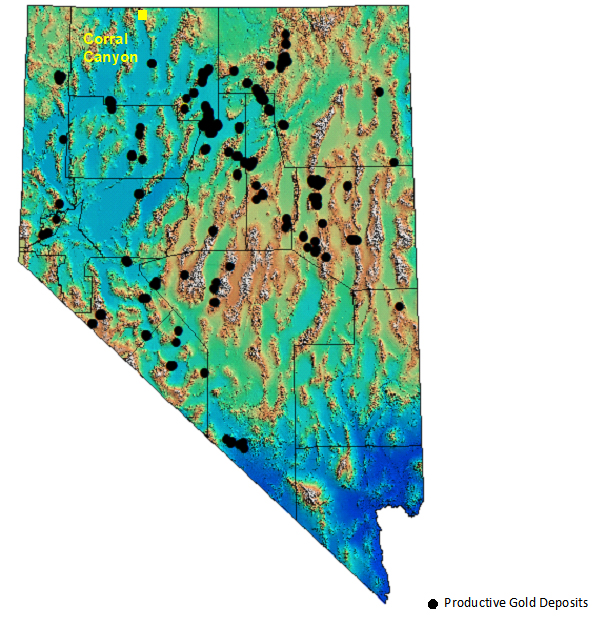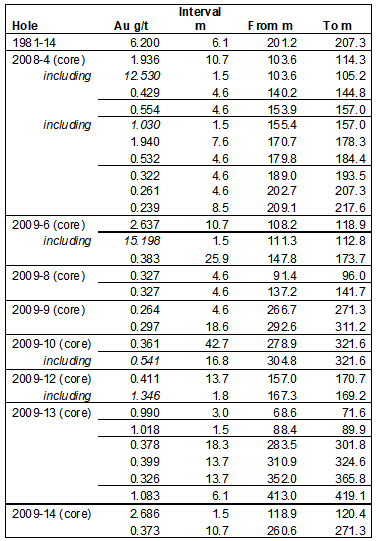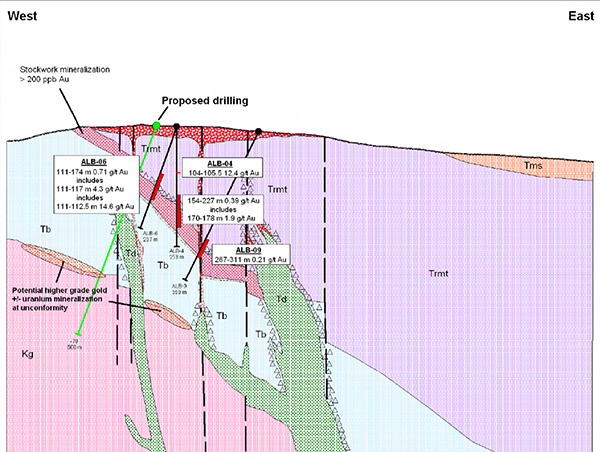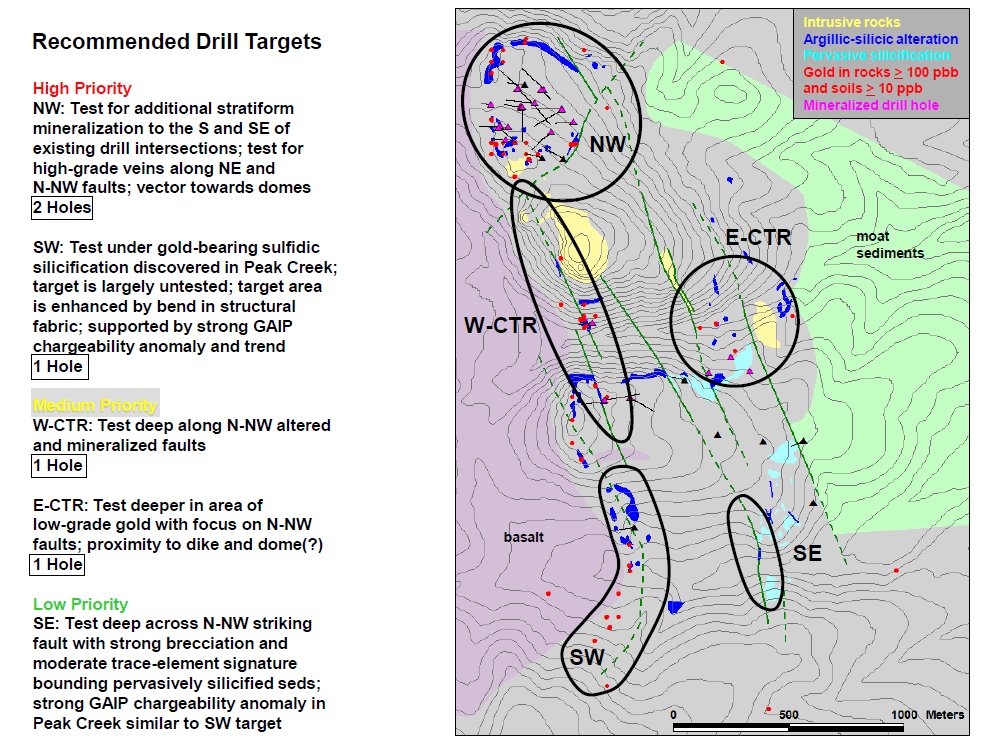Volcanic-hosted Epithermal Gold
Northwestern Nevada Topography, County Lines, Productive Gold Deposits and Other Significant Gold Occurrences Labeled Deposits are Middle Miocene, Volcanic-Hosted Epithermal Deposits Similar to Corral Canyon
Geologic Setting and Mineralization
- Favorable system type
- Volcanic-hosted, low-sulfidation epithermal gold of probable Middle Miocene age localized along margin of large McDermitt caldera complex
- Bimodal (basalt, rhyolite) volcanic sequence
- Analogues: Sleeper, Midas (Ken Snyder), Hog Ranch, Fire Creek, Mule Canyon, Rawhide, Round Mountain, Hollister
- On regional, north-trending “Western Nevada Rift” structural zone
- Sleeper (bonanza-grades, Paramount Gold)
- Sandman (high-grade, Newmont)
- Goldbanks (disseminated and high-grade veins, Premier Gold Mines and Kinross Gold)
- Lithium and uranium resources on trend from 3 to 30km to the south (Lithium Americas)
- Known disseminated mineralization and high-grade veins
- Historic drilling intersected low-grade (0.2-0.5 g/t Au) up to 40m drilled thickness
- Local high-grade intersections (12.5 g/t over 1.5m, 14.6 g/t over 1.5m)
- Mineralization is open on strike and at depth; mineral system is at least 2.5 km long
Selected Historic Drill Results
Composites calculated using nominal 0.200 g/t Au cutoff with internal high-grade intervals mostly using 1.000 g/t cutoff; composite intervals do not necessarily equate to true width.
Canagold considers these results to be historical, it has not completed sufficient work to independently verify these results.
Historic Drill Section
Canagold considers these results to be historical, it has not completed sufficient work to independently verify these results
Mineralization and Targets
- Extensive exposed chalcedonic silicification with local opaline silica indicates that the present surface represents the shallow parts of an epithermal system; low gold grades at surface with increasing grades with depth in drilling support the potential for concealed mineralization along the 2.5-km system strike
- Mineralization and geologic structural grain strike north-northwest, a favorable orientation characteristic of productive Middle Miocene gold deposits in the northwest Great Basin
- Quartz-adularia flooding, local amethystine quartz and finely-banded crustiform chalcedony veins accompany mineralized silicified zones, again typical of productive low-sulfidation systems of this type
- Canagold’s initial analysis of historic results indicates that mineralization defined to date may be localized in part along lithologic contacts (i.e., stratiform fluid flow); as such, potential exists to define high-grade “feeder” structures; high-grade (+ 10 gpt) mineralization has been intersected in drilling; potential also exists for enhanced mineralization along the volcanic-basement contact, as is the case in many such systems.




